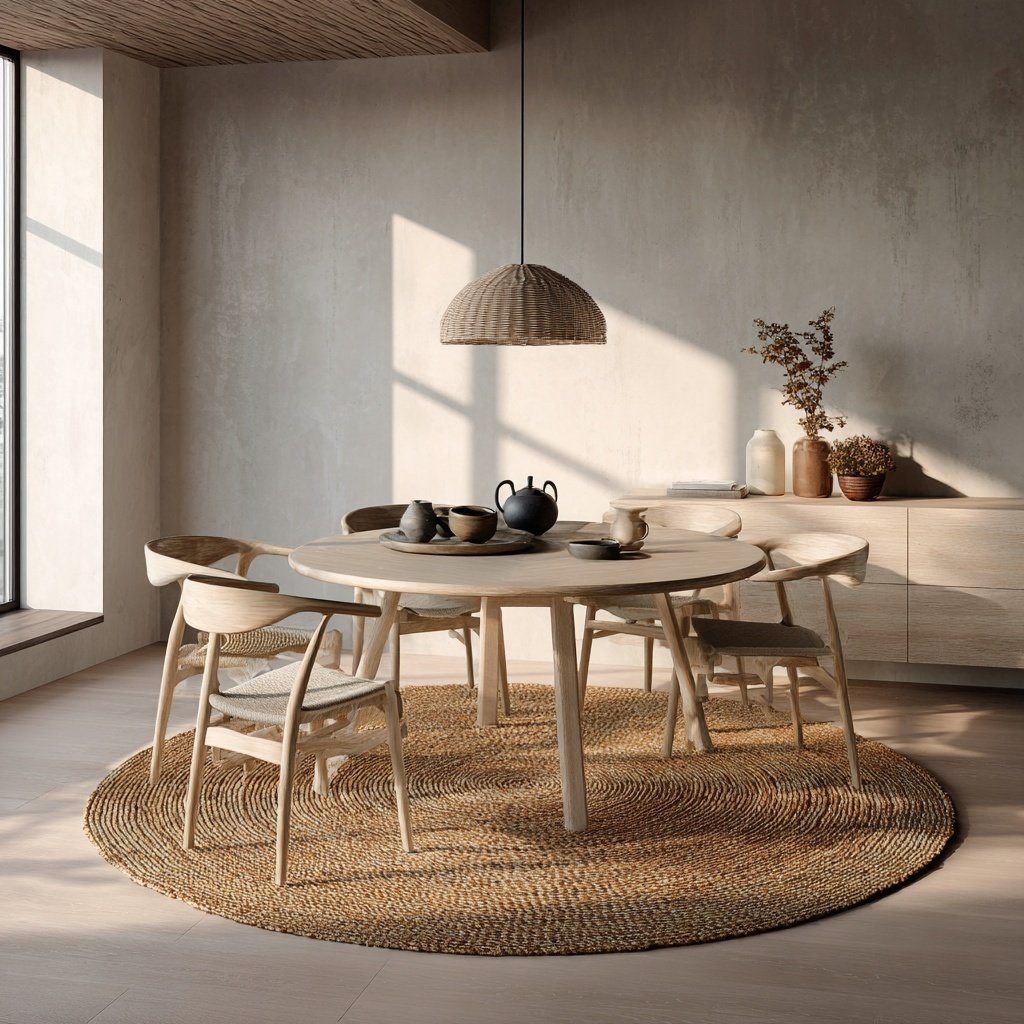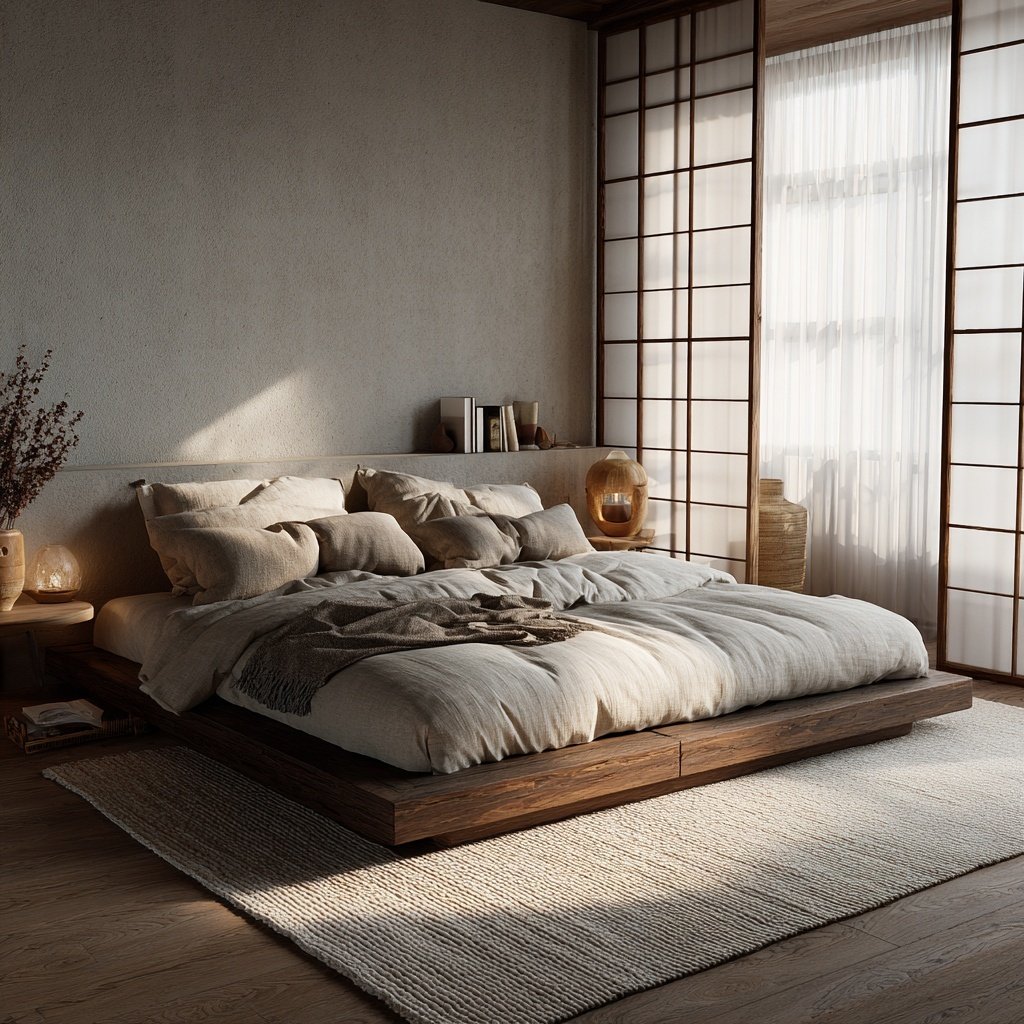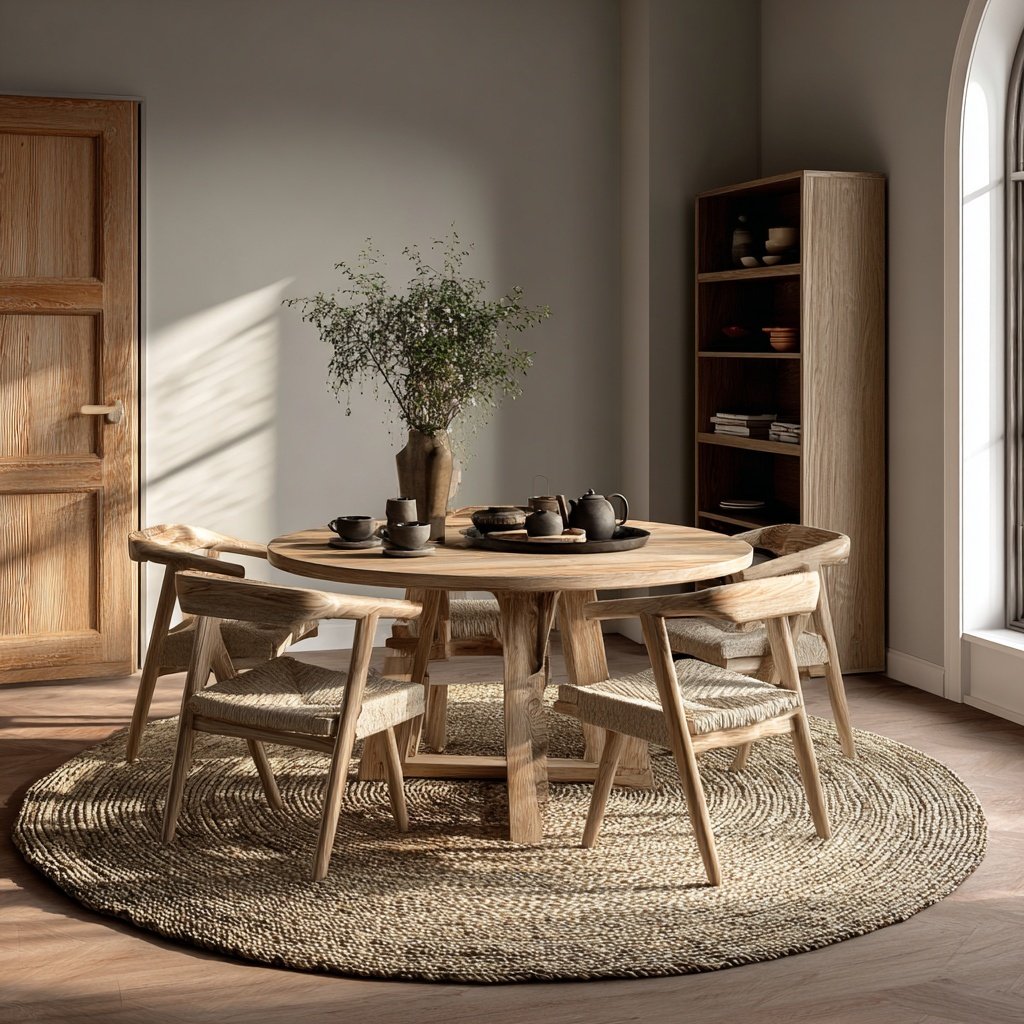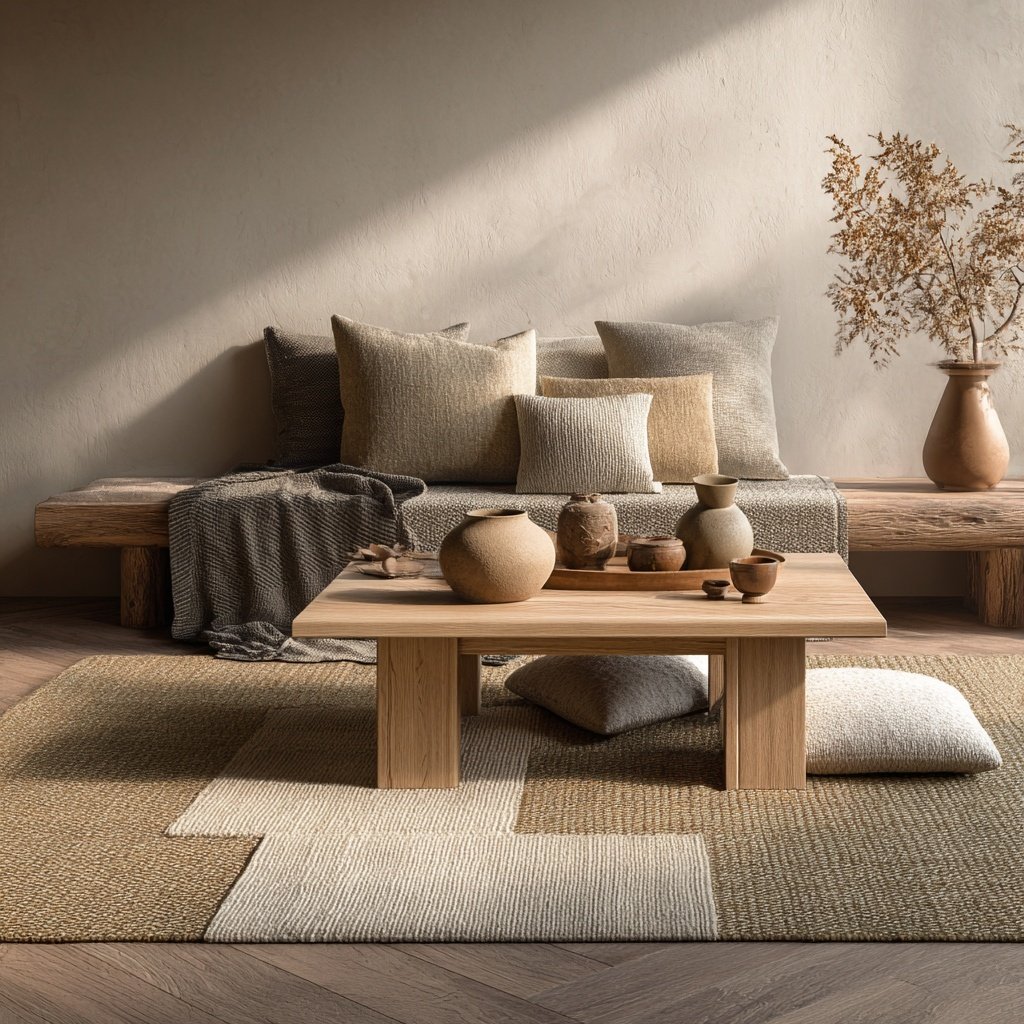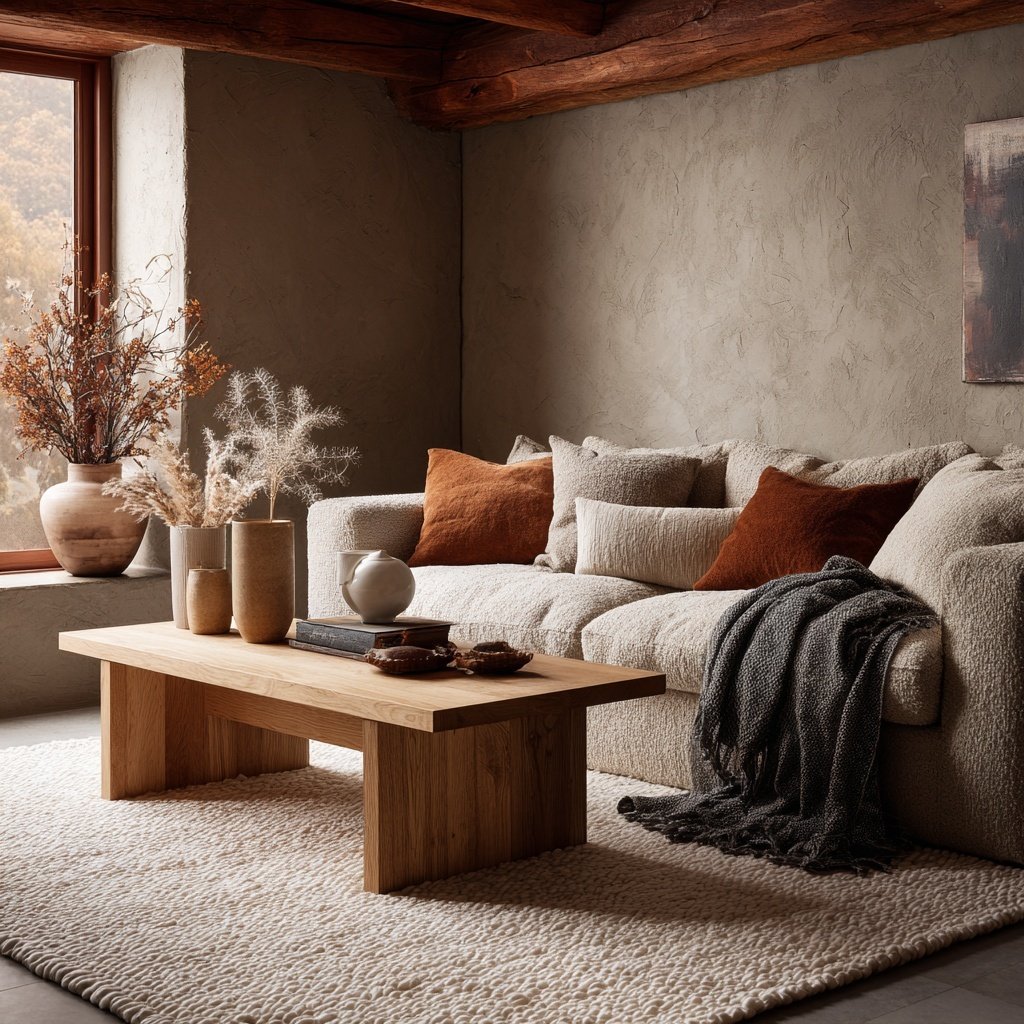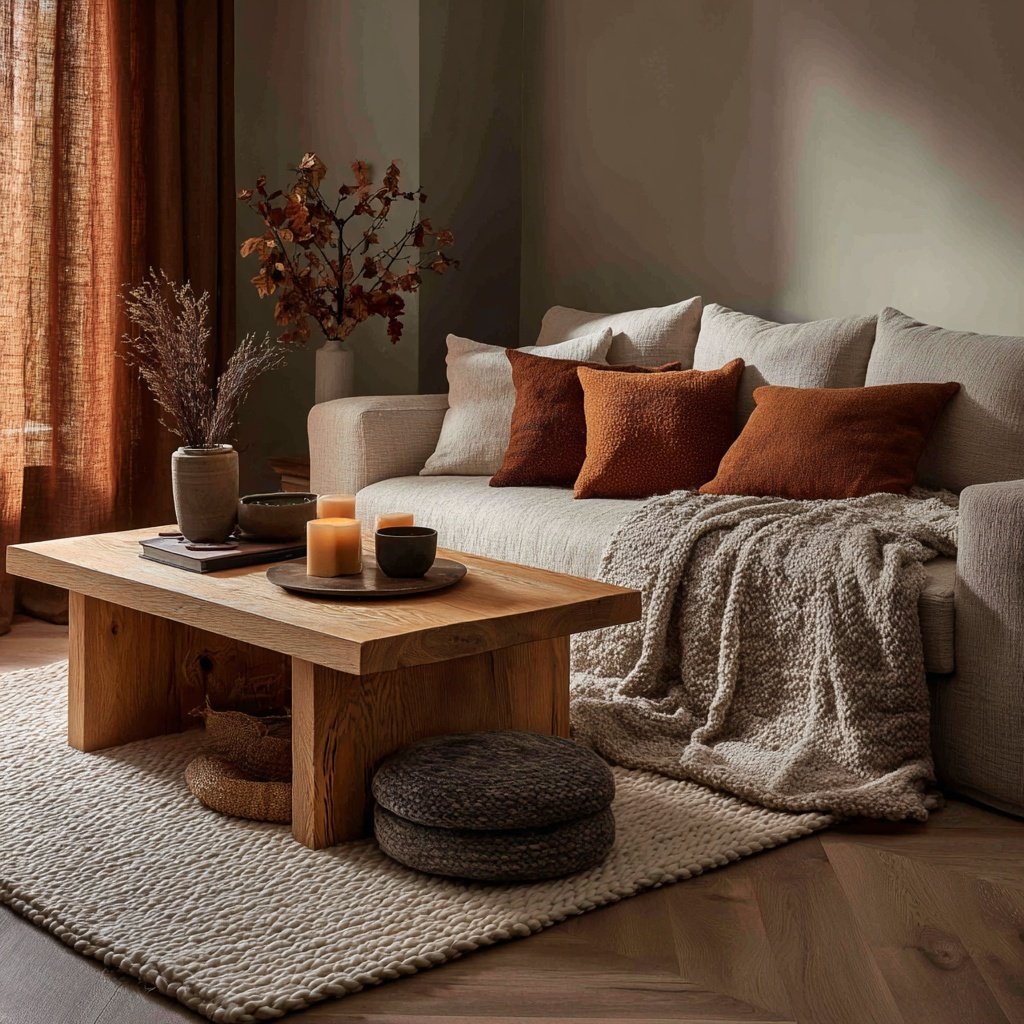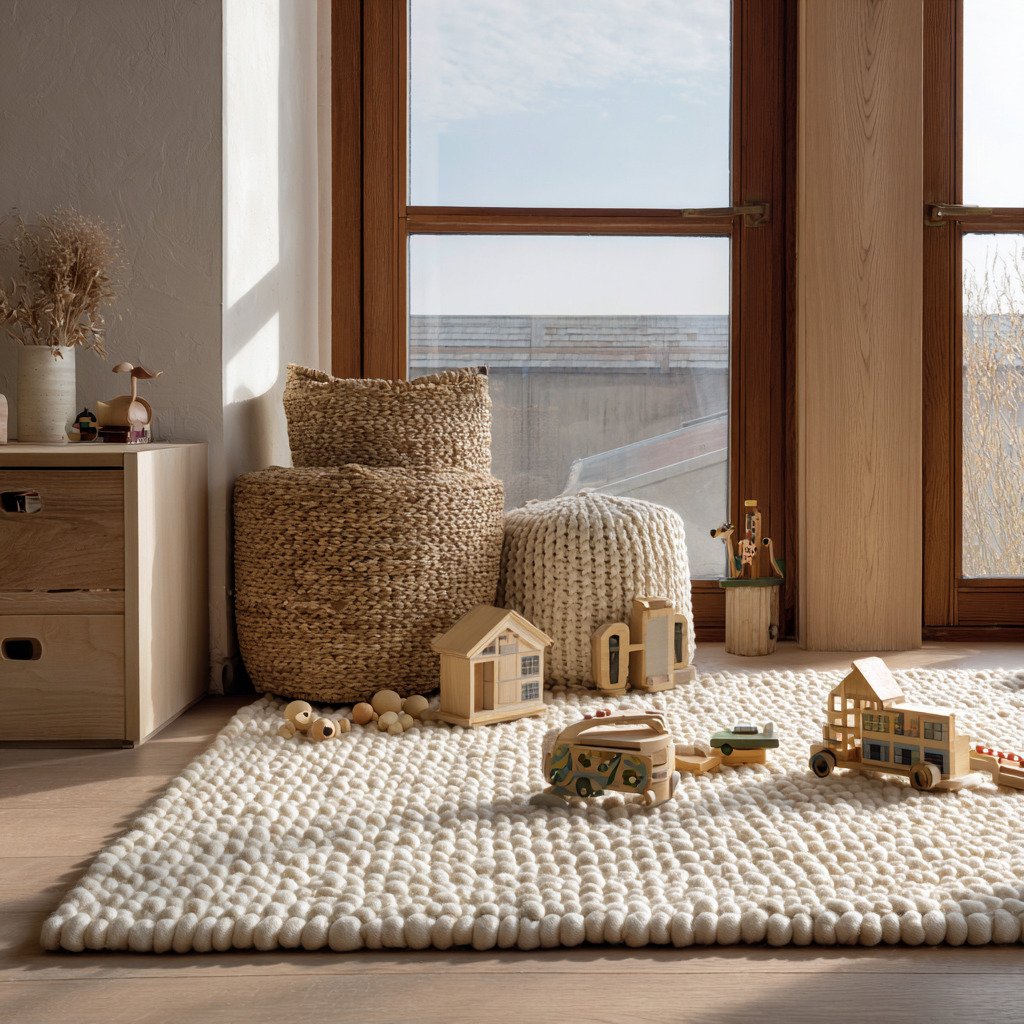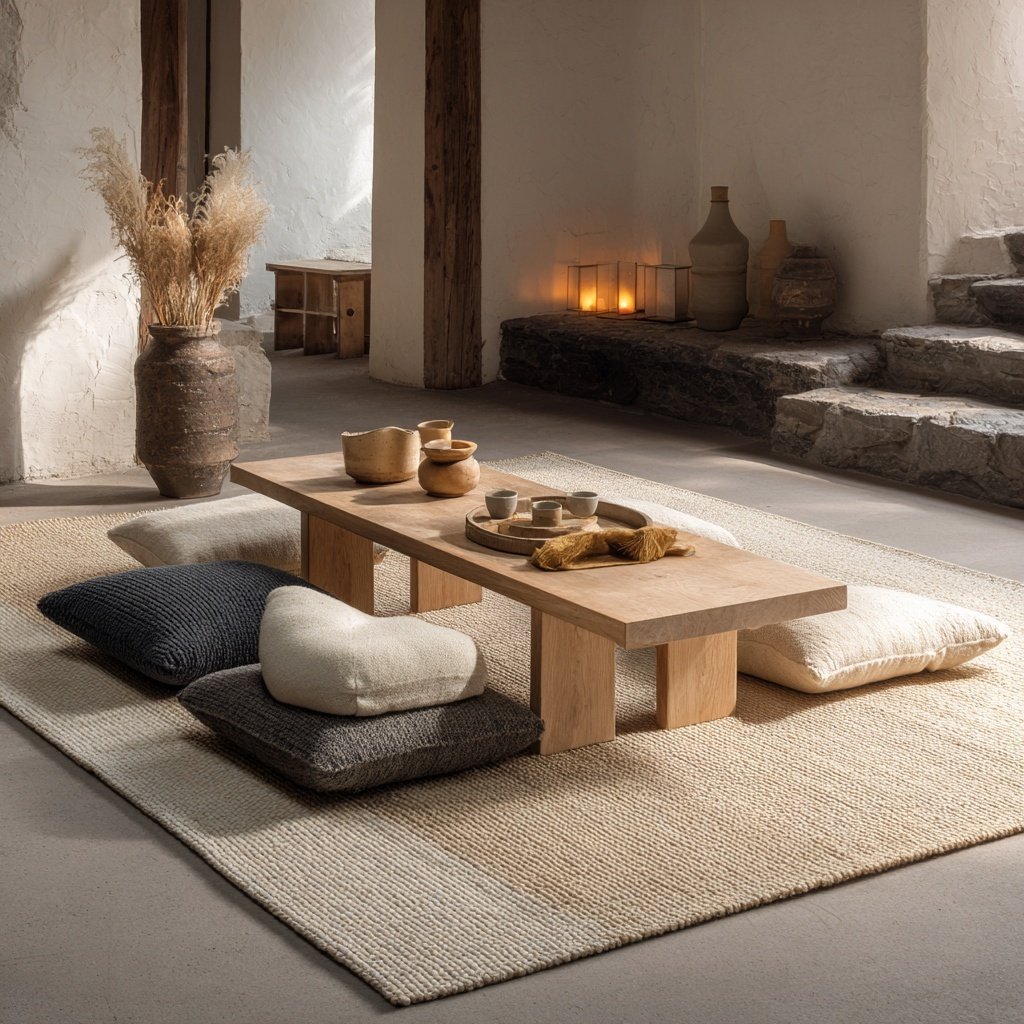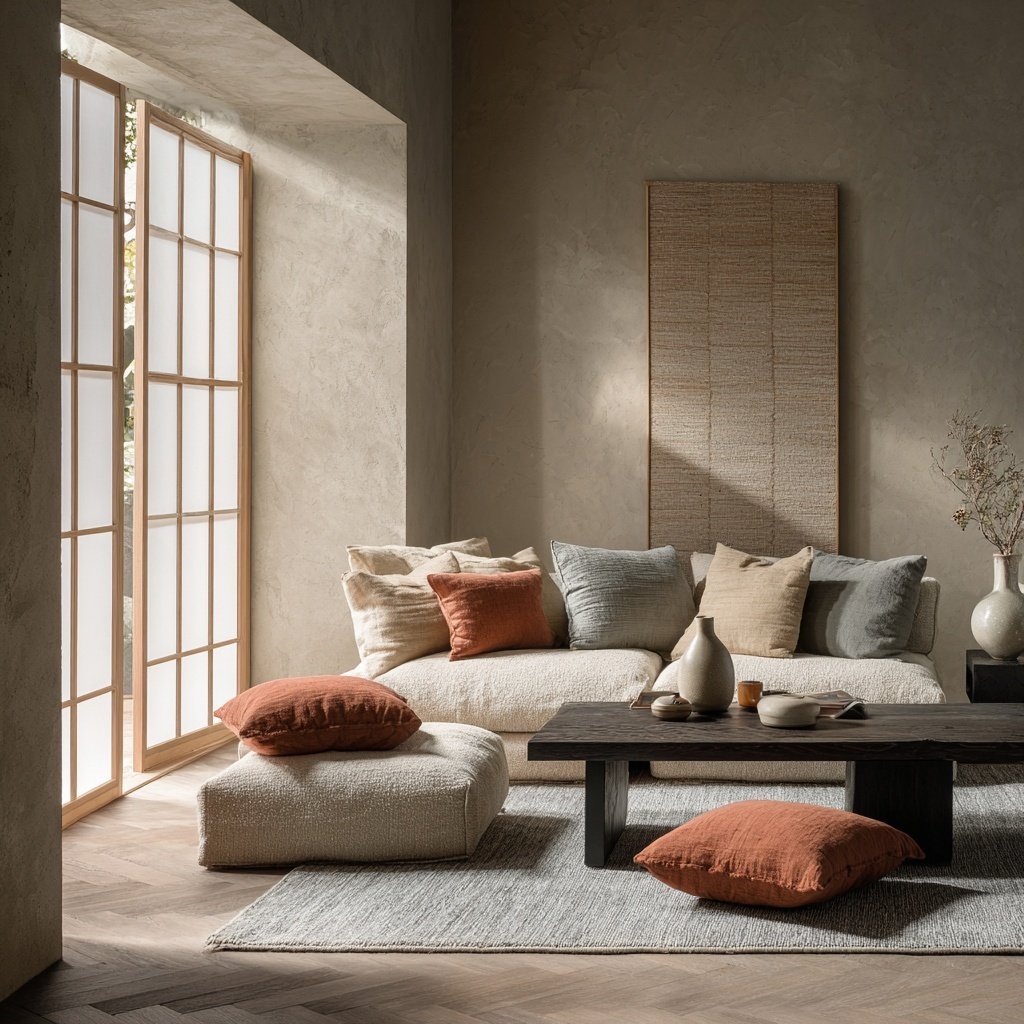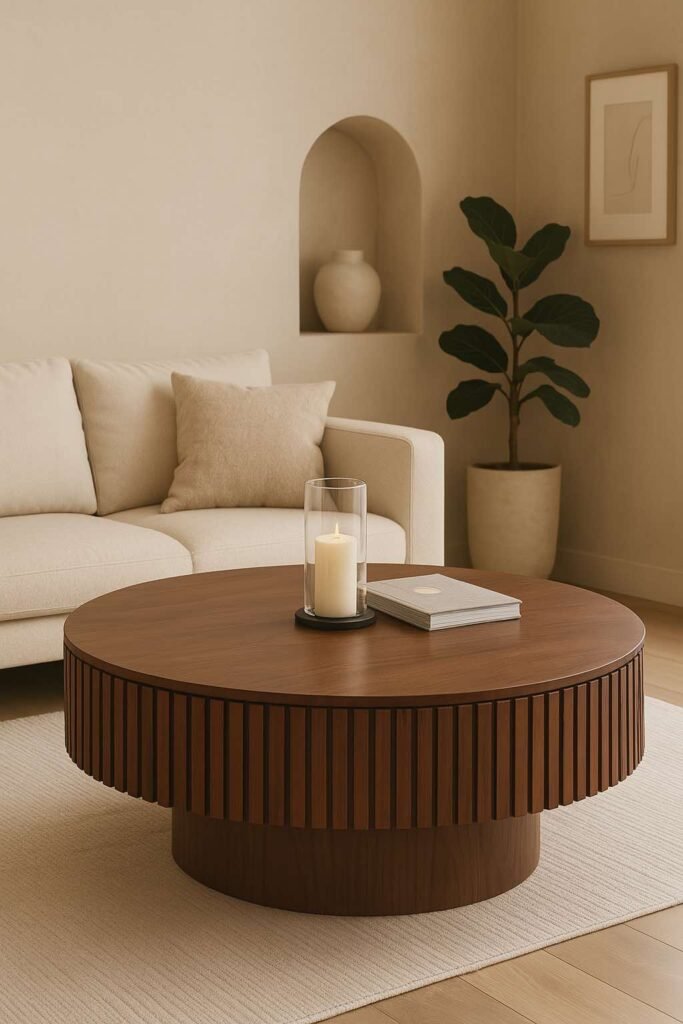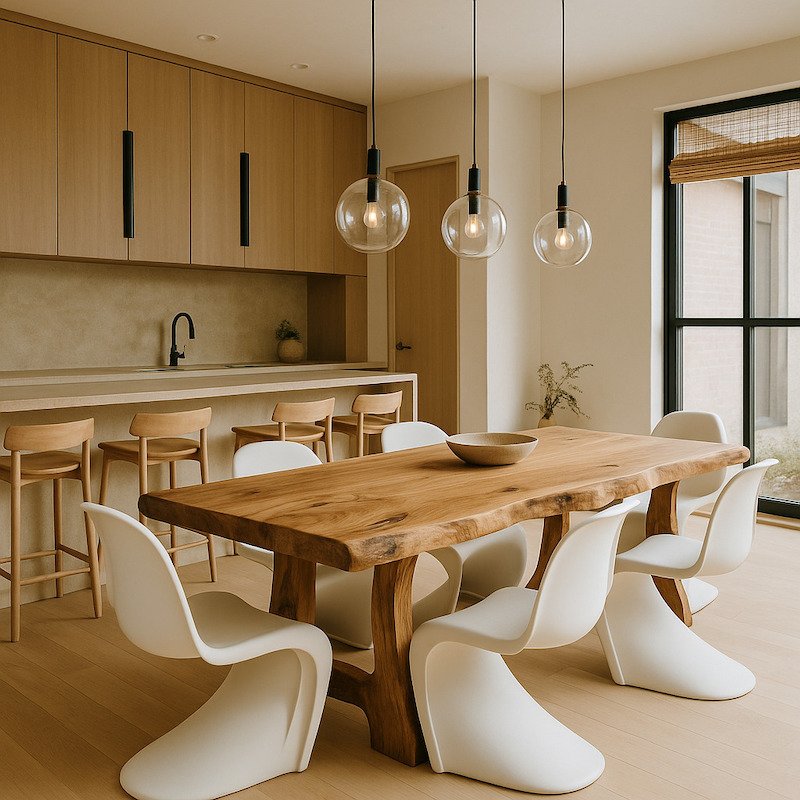Japandi Rugs 2025: styling for a minimal home
Contents
- 1 Japandi Rugs 2025: styling for a minimal home
- 1.1 What Makes a Rug “Japandi”? Understanding the Aesthetic
- 1.2 Essential Characteristics of Quality Japandi Rugs
- 1.3 Size Selection and Room Planning for japandi rugs
- 1.4 Natural Fiber Options: Comparing Materials
- 1.5 Cotton: Family-Friendly Practicality
- 1.6 Product Comparison: Best Japandi Rugs by Category
- 1.6.1 Best over all ETSY vs Amazon japandi rugs
- 1.6.2 Styling Tips: Integrating japandi Rugs in your interior
- 1.6.3 Layering Techniques
- 1.6.4 Color Coordination Strategies
- 1.6.5 Furniture Placement Guidelines
- 1.6.6 Budget Planning and Investment Strategies for your japandi rugs
- 1.6.7 Starting Your Rug Collection
- 1.6.8 Timing Purchases for Maximum Value
- 1.6.9 Quality vs Budget Balancing
- 1.6.10 Future Trends and Innovations for japandi rugs
- 1.6.11 Technology in Natural Fiber Rugs
- 1.6.12 Evolution of Japandi Rug Aesthetics
- 1.7 Conclusion: Creating Your Perfect Japandi Rug Collection
Japandi rugs do more than cover your floors—they set the tone for a calm, balanced home. By combining natural fibers, soft neutral colors, and subtle textures, the right rug can transform any room into a serene retreat. In this guide, you’ll find practical tips and curated ideas to help you choose and style Japandi rugs that feel timeless, functional, and effortlessly elegant.
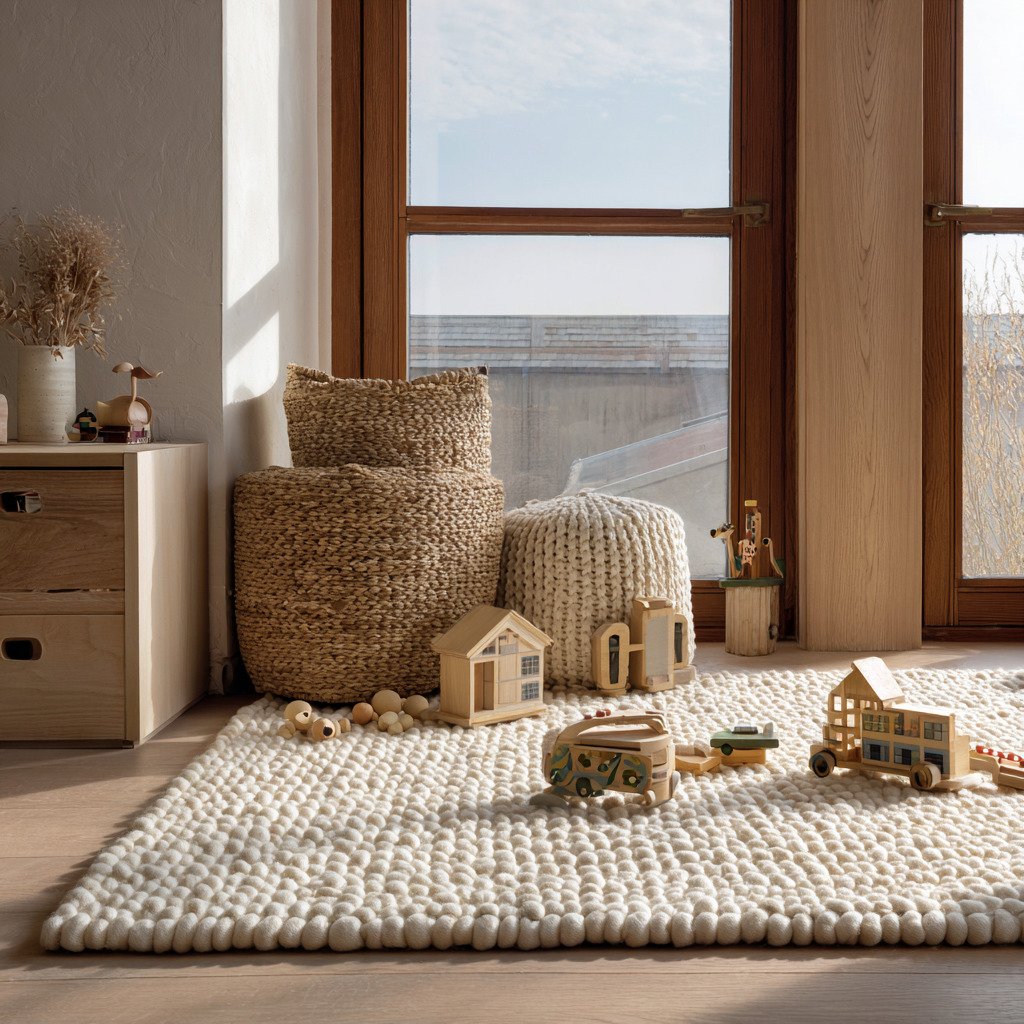
Written by Anzella Casica certified interior design specialist from ANEC Interior Design Studio
Japandi rugs create the foundation for serene, comfortable spaces where natural materials meet mindful design. These beautiful floor coverings anchor your rooms while adding warmth and texture that complements the style’s signature wood furniture and neutral palettes.
Whether you’re styling a compact apartment or spacious family home, the right rug transforms cold floors into welcoming spaces that invite barefoot comfort. You’ll discover how to choose sizes, materials, and patterns that enhance rather than overwhelm your Japandi aesthetic—plus specific product recommendations that deliver exceptional value.
What Makes a Rug “Japandi”? Understanding the Aesthetic
Japandi rugs embody the same principles that define the entire design philosophy: natural materials, muted colors, and functional beauty. These pieces celebrate organic textures and subtle patterns that complement rather than compete with your furniture and architectural elements.
The Japanese influence appears in the rug’s restraint and connection to natural elements. You’ll find earth-inspired colors, organic patterns, and materials that age gracefully over time. Meanwhile, the Scandinavian aspect adds comfort and warmth that makes spaces feel welcoming rather than austere.
Furthermore, authentic Japandi rugs show variations in texture and color that reveal their handcrafted or natural origins. Machine-made perfection contradicts the style’s appreciation for organic beauty and subtle imperfections that add character to living spaces.
Most importantly, these rugs serve both practical and aesthetic purposes. They define seating areas, provide comfort underfoot, reduce noise between floors, and create visual anchors that ground furniture arrangements while maintaining the overall sense of calm.
Essential Characteristics of Quality Japandi Rugs
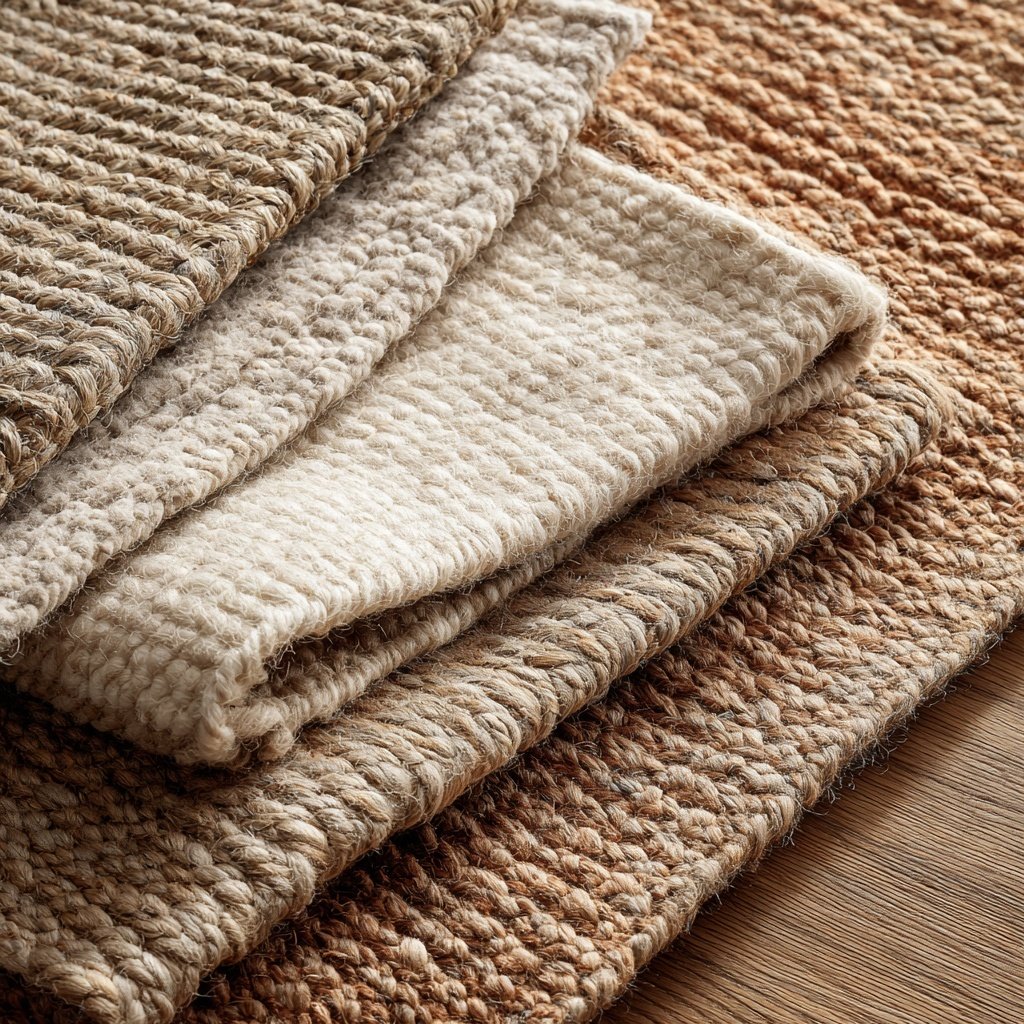
Natural Fiber Construction
Premium Japandi rugs feature natural materials that connect interior spaces with the organic world. Jute, wool, cotton, and linen create the foundation for authentic pieces that support the style’s environmental consciousness and tactile appeal.
Wool rugs offer exceptional durability and natural stain resistance, making them perfect for busy family areas. New Zealand wool provides particularly soft texture while maintaining resilience against heavy foot traffic. Additionally, wool’s natural temperature regulation keeps floors comfortable year-round.
Jute creates beautiful textural contrast with smooth wood floors while providing affordable access to natural fiber luxury. These sustainable rugs work especially well in casual areas like entryways, sunrooms, or covered outdoor spaces where their rustic charm enhances relaxed atmospheres.
Cotton rugs deliver softness and washability that families with young children appreciate. Flat-weave cotton options provide durability while maintaining the clean lines essential to Japandi aesthetics. Moreover, cotton takes natural dyes beautifully, creating subtle color variations.
Neutral Color Palettes
Japandi rugs work within carefully curated color schemes that support rather than dominate room designs. Warm whites, soft grays, natural beiges, and muted earth tones create perfect foundations that allow furniture and architectural elements to shine.
Avoid bright colors or high-contrast patterns that compete for attention in minimalist spaces. Instead, choose pieces with subtle tonal variations that add depth without creating visual chaos. These understated colors photograph beautifully while remaining timeless across changing trends.
Earth-inspired accent colors like sage green, muted terracotta, or soft ochre work beautifully when used sparingly. These organic hues echo outdoor elements while maintaining the serene atmosphere essential to successful Japandi interiors.
The goal is creating layers of neutral tones that build visual interest through texture and subtle color shifts rather than bold contrasts that disrupt the style’s peaceful principles.
Simple organic patterns
Avoid busy patterns, florals, or traditional motifs that contradict the style’s minimalist approach. Instead, look for pieces where pattern emerges through texture variations, subtle color shifts, or simple geometric arrangements that enhance rather than overwhelm.
Pattern selection requires careful restraint in Japandi design. Geometric shapes, subtle stripes, and organic textures work beautifully when executed with appropriate subtlety and color coordination.
Hand-knotted or hand-woven construction often creates natural pattern variations that align perfectly with Japandi appreciation for organic beauty. These subtle irregularities prevent rugs from feeling machine-made or sterile.
Remember that in Japandi design, the most beautiful patterns often emerge from the interplay between different textures and materials rather than printed or woven designs that compete for visual attention.
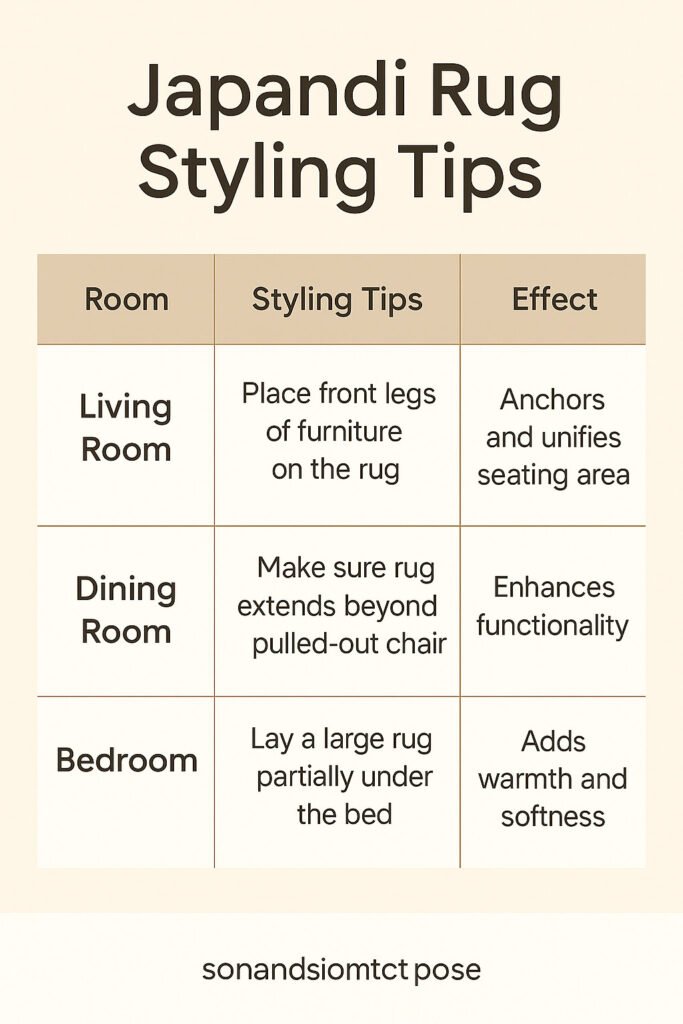
Size Selection and Room Planning for japandi rugs
Living Room Rug Sizing
Proper rug sizing dramatically impacts how spacious and well-proportioned your living room feels. In Japandi spaces, rugs should define seating areas without overwhelming the room’s clean lines and natural materials.
For standard seating arrangements, choose rugs large enough to fit at least the front legs of sofas and chairs. This creates visual cohesion while maintaining practical benefits like protecting floors and reducing noise. A 8×10 foot rug typically works well for most living room configurations.
However, smaller spaces benefit from more conservative sizing that maintains visual breathing room. A 6×9 foot rug can anchor furniture groupings without making compact rooms feel cramped or cluttered—essential considerations for apartment living.
Additionally, consider leaving consistent spacing between rug edges and walls. This perimeter breathing room enhances the sense of spaciousness that Japandi design prioritizes while creating balanced proportions throughout your room.
check out our top 5 japandi coffee tables to compliment your new japandi rug
Dining Room Applications
Dining room rugs require special sizing considerations to accommodate chair movement while protecting floors from daily wear. Choose pieces large enough to keep chair legs on the rug even when pulled out for seating.
A general rule suggests adding 4-6 feet to your table dimensions for proper dining rug sizing. This ensures comfort during meals while preventing chairs from catching on rug edges during use. Round tables work beautifully with round rugs that echo their circular forms.
Furthermore, consider your dining room’s traffic patterns when selecting rug placement and size. High-traffic areas around serving zones need durable materials and appropriate sizing that doesn’t impede movement during meal preparation or cleanup.
Natural fiber rugs work particularly well in dining spaces because they handle spills better than synthetic alternatives while maintaining the authentic material palette essential to Japandi aesthetics.
Bedroom Comfort Zones
Bedroom rugs create comfort zones around beds while adding warmth to morning and evening routines. Place larger rugs partially under beds with sufficient extension for comfortable barefoot standing on both sides.
For double beds, 8×10 foot rugs typically provide adequate coverage, while king beds often require 9×12 dimensions for proper proportions. Alternatively, runner rugs along each bedside create targeted comfort without covering entire floor areas.
Consider your bedroom’s morning light patterns when selecting rug colors and textures. Natural materials like wool or cotton provide comfortable surfaces for yoga, stretching, or quiet meditation practices that many Japandi enthusiasts incorporate into daily routines.
Washable cotton rugs work particularly well in bedrooms where occasional cleaning maintains freshness and hygiene standards important for quality sleep environments.
Natural Fiber Options: Comparing Materials
Wool: The Premium Choice
Wool represents the gold standard for Japandi rugs, offering unmatched durability, natural beauty, and practical performance. This remarkable fiber provides natural stain resistance, temperature regulation, and acoustic benefits that synthetic alternatives cannot match.
New Zealand Wool Rugs:
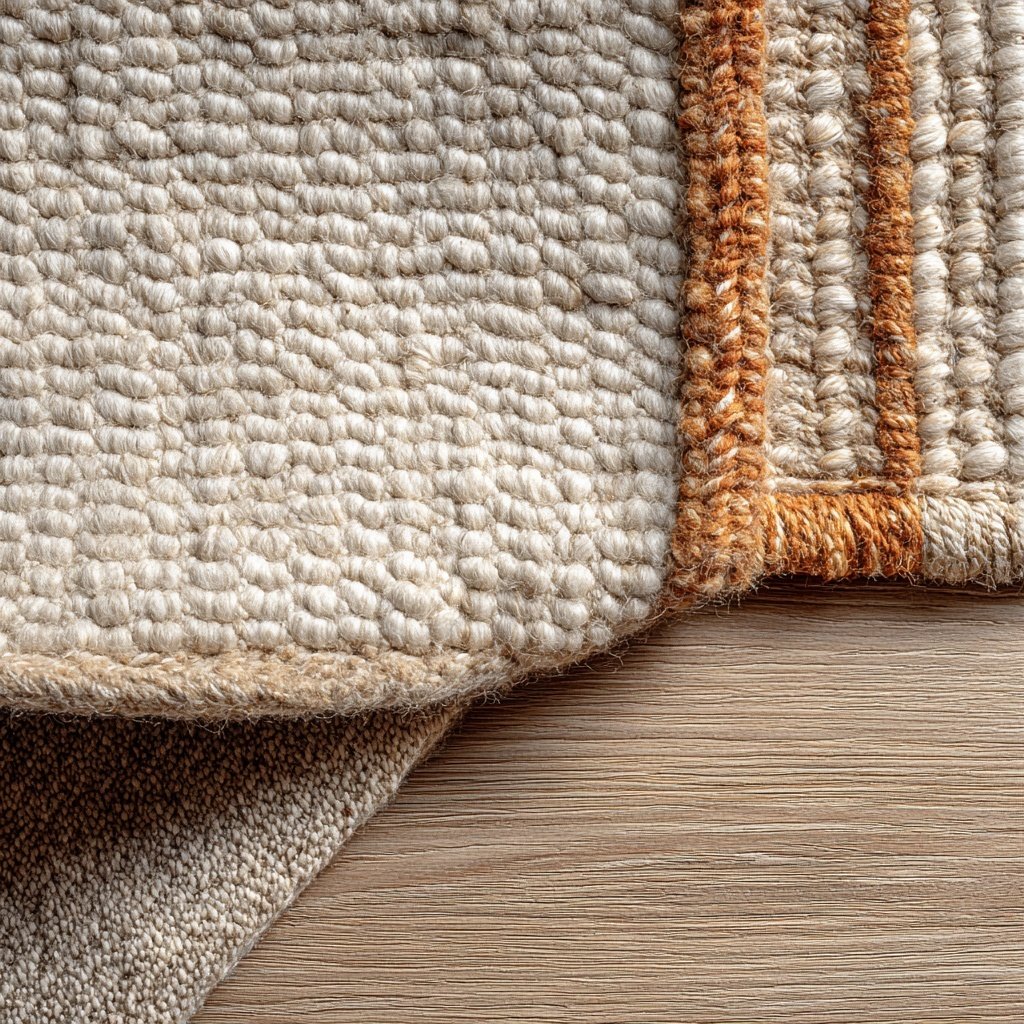
- Superior softness and resilience
- Natural lanolin provides stain resistance
- Excellent for high-traffic areas
- Price range: $400-1200 for quality pieces
- Best for: Living rooms, bedrooms, formal areas
Tibetan Wool Options:
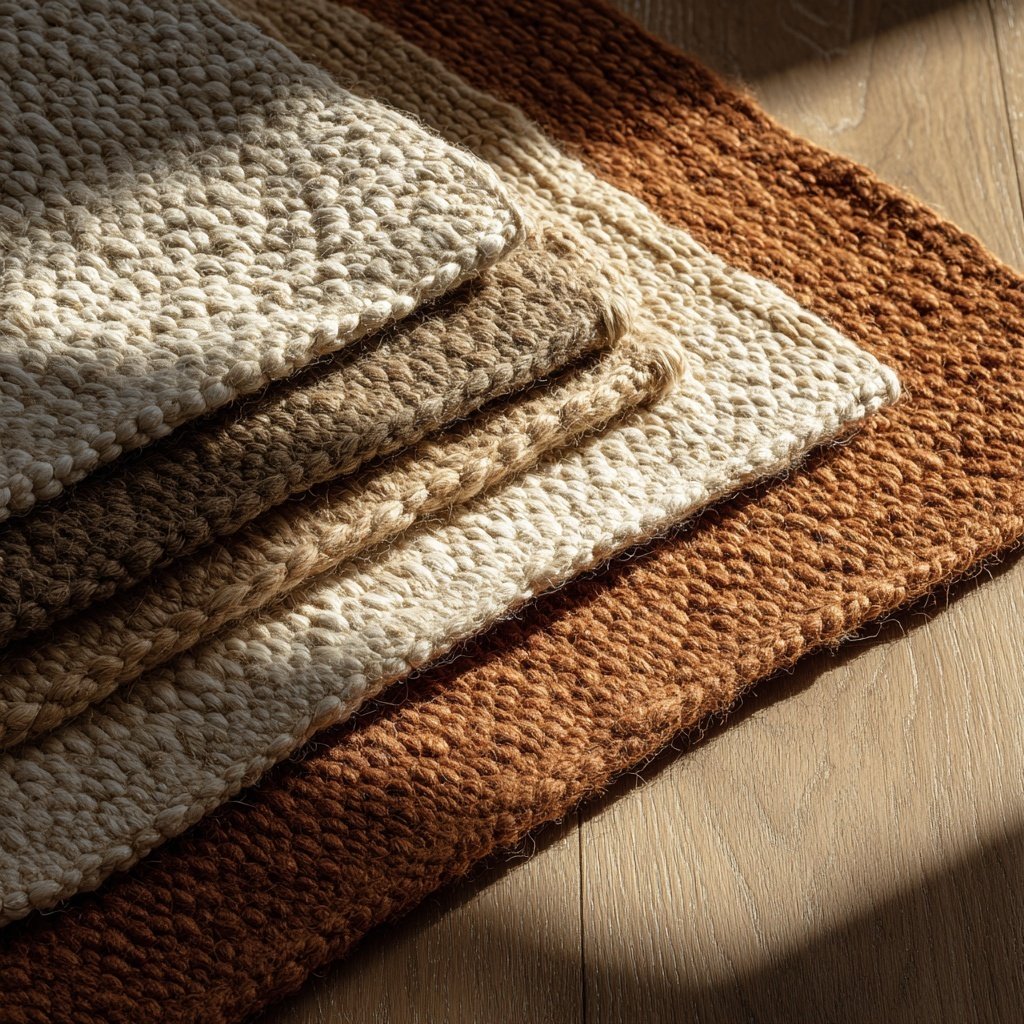
- Hand-knotted construction adds authenticity
- Dense pile provides luxury underfoot
- Unique texture variations from traditional techniques
- Investment pricing: $800-2500+
- Ideal for: Statement pieces, low-traffic areas
Wool’s natural properties align perfectly with Japandi principles while providing practical benefits that justify higher initial costs through extended durability and timeless appeal.
Jute: Affordable Natural Beauty
Jute rugs deliver authentic natural fiber appeal at budget-friendly prices, making Japandi style accessible for first-time homeowners and rental properties. This sustainable material provides distinctive texture that complements wood floors beautifully.
Flat-Weave Jute Rugs:
- Casual, relaxed appearance
- Excellent for layering with smaller rugs
- Easy to clean and maintain
- Budget range: $150-400 for large sizes
- Perfect for: Casual areas, outdoor spaces, layering
Chunky Jute Textures:
- Bold textural interest without patterns
- Natural color variations add character
- Durable enough for moderate traffic
- Mid-range pricing: $300-600
- Great for: Entryways, sunrooms, casual dining
Jute’s rustic charm works especially well in spaces where you want to emphasize natural materials without formal elegance that wool provides.
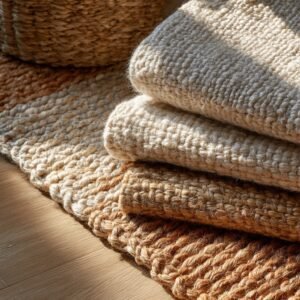
Cotton: Family-Friendly Practicality
Cotton rugs offer washability and softness that busy families appreciate while maintaining natural material authenticity. These versatile pieces work particularly well in children’s areas and high-maintenance spaces.
Flat-Weave Cotton Rugs:
- Machine washable convenience
- Crisp, clean appearance
- Affordable pricing for regular replacement
- Range: $100-300 for quality options
- Excellent for: Kids’ rooms, kitchens, bathrooms
Tufted Cotton Varieties:
- Softer texture than flat-weaves
- More substantial appearance
- Moderate durability for family use
- Price range: $200-500
- Suitable for: Bedrooms, play areas, casual spaces
Cotton’s practical benefits make it ideal for families transitioning to Japandi style without major lifestyle adjustments or maintenance commitments.
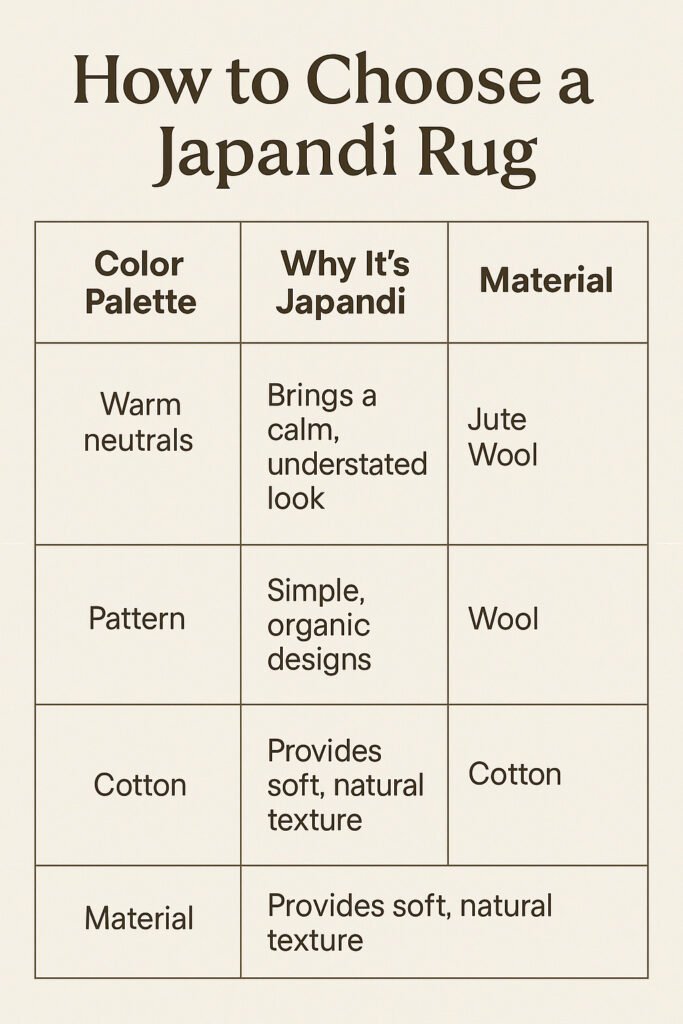
Product Comparison: Best Japandi Rugs by Category
Best Overall Value: IKEA vs West Elm
IKEA LOHALS Natural Jute Rug
- Materials: 100% jute flat-weave
- Sizes: Multiple options from 4×6 to 8×11
- Price: $129-299 (exceptional value)
- Pros: Affordable, authentic natural fiber, reversible
- Cons: Limited pattern options, casual appearance only
- Best for: Budget-conscious families, rental properties
Available through IKEA stores and online with frequent stock availability
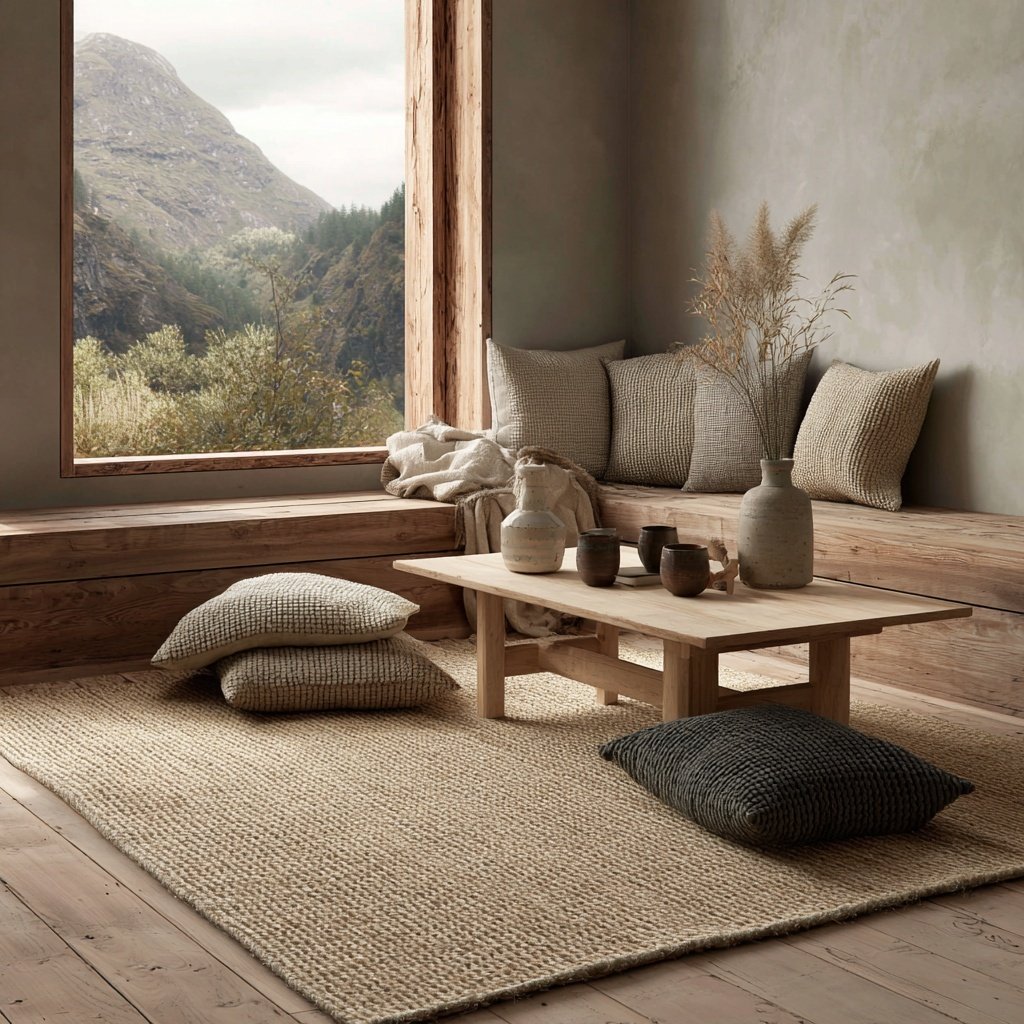
West Elm Chunky Wool Jute Rug
- Materials: Wool and jute blend
- Sizes: 6×9 to 9×12 available
- Price: $399-799 (mid-range value)
- Pros: Combines materials beautifully, good durability
- Cons: Higher maintenance than pure jute, moderate softness
- Ideal for: Living rooms seeking texture contrast
- Regular sales reduce pricing by 20-30% during promotional periods
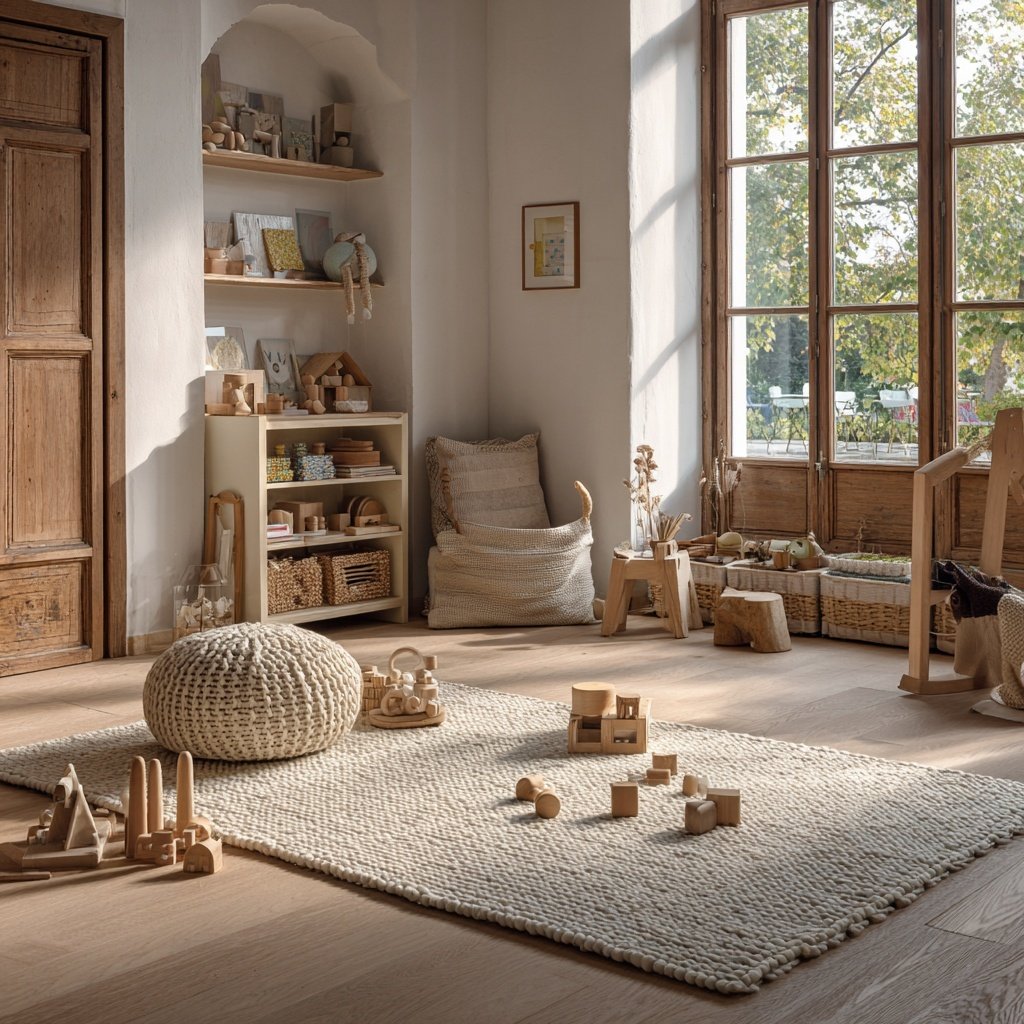
japandi rugs on ETSY
- Construction: Handwoven, hand-tufted, or loom-crafted by independent artisans
- Materials: Natural fibers such as wool, jute, linen, and cotton
- Customization: Many sellers offer made-to-order sizing and color variations
- Price range: $200–$2,500+ depending on size, material, and craftsmanship
- Benefits: Unique, one-of-a-kind pieces that highlight artisanal character; supports small businesses
- Considerations: Longer lead times, higher shipping costs, limited return policies
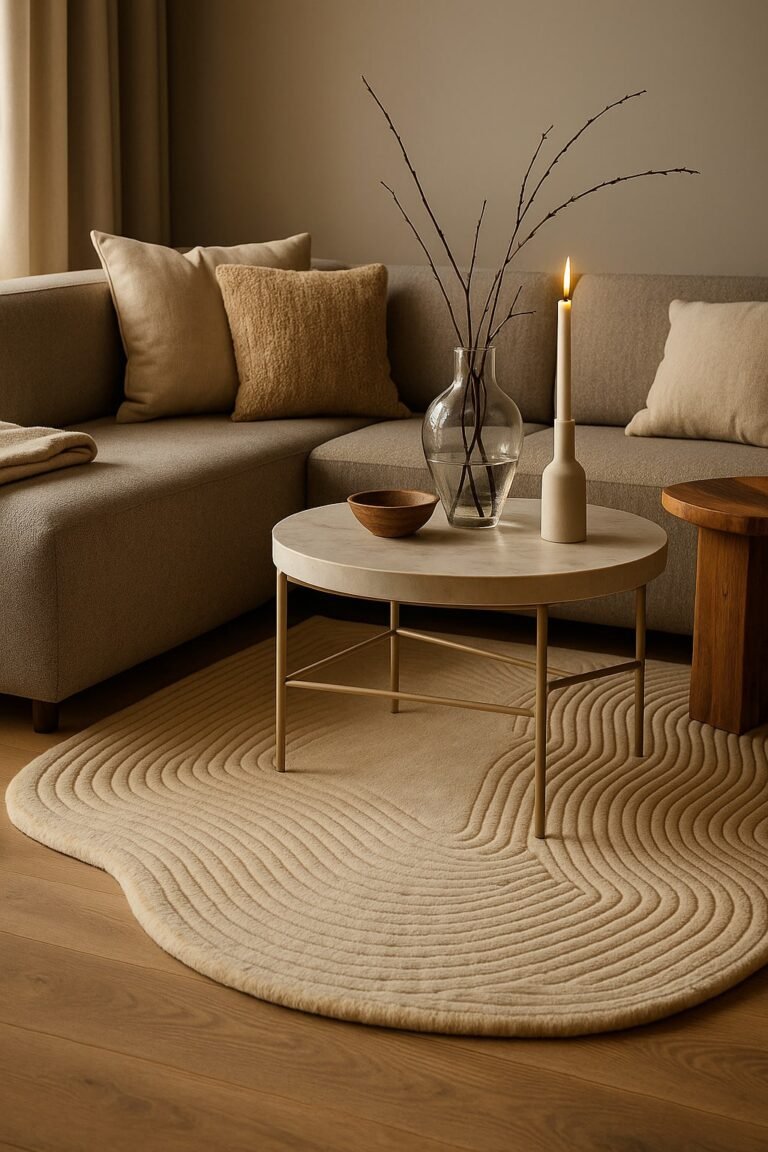
perfect for a japandi style living room
Japandi Rugs on AMAZON
- Construction: Primarily machine-made or mass-produced with some handwoven imports
- Materials: Mix of natural fibers (wool, jute, cotton) and synthetics (polypropylene, polyester)
- Customization: Limited; most listings are fixed sizes and colors
- Price range: $80–$800, with budget-friendly options widely available
- Advantages: Fast shipping, easy returns, and buyer protection
- Services: Access to verified reviews, Prime delivery, and customer support
- Considerations: Less uniqueness, variable quality across sellers
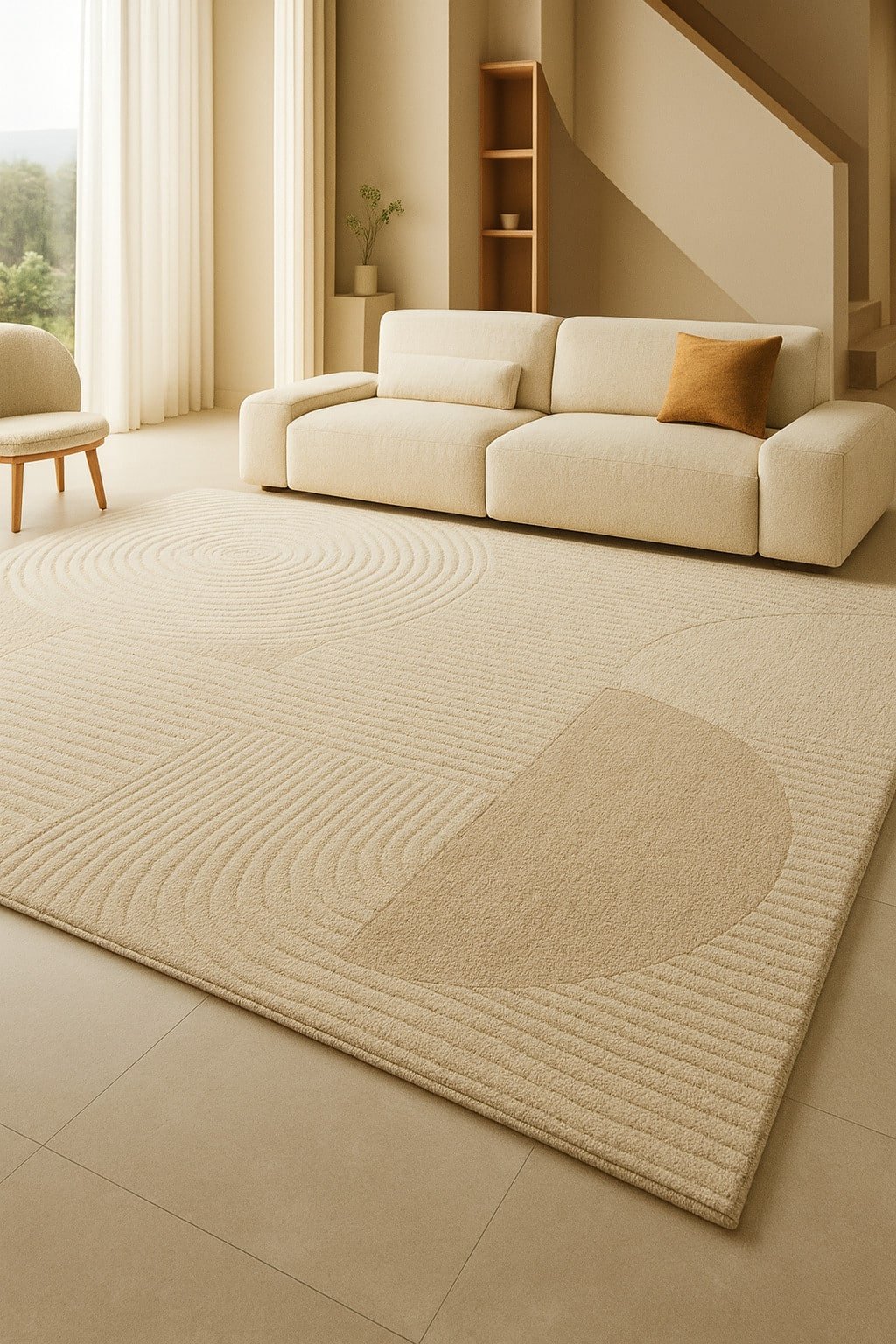
quality materials for an affordable price.
Best over all ETSY vs Amazon japandi rugs
Styling Tips: Integrating japandi Rugs in your interior
Layering Techniques
Layering rugs creates visual depth while maintaining the restraint essential to Japandi design. Start with larger neutral base rugs, then add smaller textural pieces that introduce subtle pattern or material contrast.
Choose layering pieces that complement rather than compete with your base rug. A flat-weave jute foundation works beautifully with a smaller wool accent rug that adds softness in seating areas. This technique provides flexibility for seasonal changes without major investments.
Furthermore, layering allows budget-conscious decorators to achieve luxury looks through strategic combinations of affordable pieces. Mix textures and materials while maintaining color coordination for sophisticated results that photograph beautifully.
The key lies in proportional relationships—smaller layers should be significantly different in size to create intentional rather than accidental appearances.
for our comprehensive guide to japandi styling in small spaces check our guide
Color Coordination Strategies
Japandi rugs should enhance your existing color palette rather than introducing new hues that disrupt visual harmony. Use rugs to bridge color gaps between furniture pieces and architectural elements.
When working with wood furniture of different tones, choose rugs with undertones that complement both pieces. Warm gray rugs work beautifully with oak and walnut combinations, while cream options enhance lighter wood pairings.
Additionally, consider how natural light affects rug colors throughout the day. Test samples in your actual space during different lighting conditions to ensure satisfaction with color choices over time.
Remember that neutral doesn’t mean boring—texture, weave patterns, and subtle tonal variations create interest without disrupting the serene atmosphere that defines successful Japandi interiors.
Furniture Placement Guidelines
Proper furniture placement on rugs creates visual cohesion while ensuring practical comfort during daily use. All furniture legs should either sit completely on or completely off rugs—mixed placement creates awkward visual relationships.
For seating areas, position sofas and chairs so front legs rest on rug edges while back legs remain on hard flooring. This arrangement anchors furniture while maintaining visual lightness that Japandi design requires.
Coffee tables should sit entirely on rugs with adequate clearance around edges for comfortable movement. This creates defined gathering spaces while preventing furniture from sliding during use.
Consider traffic patterns when placing rugs, especially in open-plan spaces where walking paths cross multiple functional areas throughout the day.
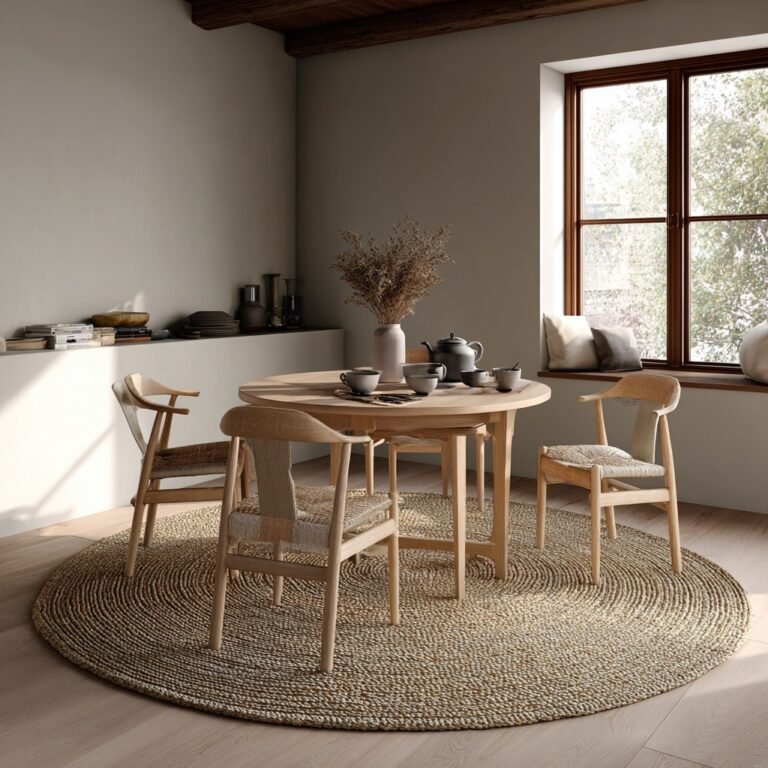
Budget Planning and Investment Strategies for your japandi rugs
Starting Your Rug Collection
Building a quality rug collection requires strategic planning that balances immediate needs with long-term design goals. Start with your most-used spaces and invest in quality pieces that will serve you for decades.
Prioritize living room and bedroom rugs first, as these areas receive daily use and significantly impact your home’s overall comfort and appearance. Budget $300-800 for these foundational pieces, depending on size requirements and material preferences.
Secondary areas like dining rooms, entryways, and home offices can utilize more budget-friendly options initially, with upgrades planned as finances allow. This approach provides immediate style improvement while building toward your ideal collection over time.
Consider your lifestyle timeline when making rug investments. Young professionals might prioritize rental-friendly options, while established families can invest in heirloom-quality pieces that will serve multiple decades.
Timing Purchases for Maximum Value
Rug sales follow predictable patterns that informed buyers can leverage for significant savings. End-of-winter clearances, back-to-school promotions, and post-holiday sales often provide 30-50% discounts on quality pieces.
New collection launches typically trigger sales on previous inventory, making spring and fall excellent times for strategic purchasing. Sign up for retailer newsletters and follow social media accounts for early sale notifications.
Additionally, consider purchasing slightly smaller sizes during sales, then upgrading to ideal dimensions later. This approach provides immediate style improvement while building experience with different materials and construction qualities.
Floor sample sales offer exceptional value on pieces with minimal wear that often photograph beautifully in retail environments. These sales typically occur during store renovations or inventory changes.
Quality vs Budget Balancing
Determine where to splurge versus save based on traffic patterns, family lifestyle, and personal priorities. High-traffic areas justify premium materials that maintain appearance despite heavy use.
Consider cost-per-year calculations when evaluating seemingly expensive pieces. A $800 wool rug that lasts 15 years costs less annually than $200 synthetic rugs replaced every 3 years, while providing superior comfort and aesthetics.
Furthermore, quality natural fiber rugs often retain resale value, making them better financial investments than synthetic alternatives that depreciate immediately and cannot be resold effectively.
Factor in maintenance costs when budgeting for different material choices. Higher-quality pieces often require less frequent replacement but may need professional cleaning services that budget options don’t warrant
Future Trends and Innovations for japandi rugs
Technology in Natural Fiber Rugs
Innovation in natural fiber processing creates improved performance characteristics while maintaining authentic material qualities. Stain-resistant wool treatments and antimicrobial cotton processing enhance practicality without compromising aesthetics.
Smart rug technologies embed sensors that detect foot traffic patterns, helping optimize furniture placement and identify high-wear areas before damage occurs. These innovations support proactive maintenance that extends rug lifespans.
Additionally, advanced weaving techniques create complex textures and patterns that were previously impossible, expanding design possibilities while maintaining handcrafted appearance that Japandi enthusiasts appreciate.
Sustainable processing innovations reduce environmental impact while often improving material performance characteristics compared to traditional methods.
Evolution of Japandi Rug Aesthetics
Cultural exchange and global connectivity influence how Japandi rug design evolves while maintaining core principles of natural materials and restrained beauty. Expect increased incorporation of global textile traditions that align with minimalist values.
Color palettes may expand slightly to include more earth-inspired options while maintaining the neutral foundation essential to the style. These evolutionary changes reflect growing environmental consciousness and biophilic design principles.
Furthermore, customization options increase as digital manufacturing techniques make small-batch production economically viable for individual consumers seeking perfectly tailored pieces.
The growing popularity of wellness-focused design drives demand for rugs with proven psychological benefits, including colors and textures that support stress reduction and mental clarity.
Conclusion: Creating Your Perfect Japandi Rug Collection
Selecting the right Japandi rugs transforms your floors from simple surfaces into foundational design elements that anchor your entire aesthetic. By prioritizing natural materials, appropriate sizing, and quality construction, you create spaces that invite relaxation while serving practical daily needs.
Remember that building an ideal rug collection takes time and thoughtful planning. Start with pieces that address your most immediate needs, then expand gradually as your understanding of the style deepens and your budget allows for additional investments.
Whether you choose budget-friendly jute options or invest in premium wool pieces, focus on materials and construction quality that will serve you well over many years. Quality rugs improve with age, developing character and patina that mass-produced alternatives never achieve.
Most importantly, select pieces that resonate with your personal lifestyle and aesthetic preferences within Japandi principles. The perfect rug supports your daily routines while contributing to the peaceful, mindful atmosphere that makes this style so appealing to modern families seeking sanctuary in their homes.
For small living rooms, choose rugs that fit at least the front legs of your main seating pieces. A 6×9 foot rug typically works well in compact spaces, creating definition without overwhelming the room. Avoid rugs that are too small, as they can make spaces feel choppy and disconnected.
Cotton and some linen rugs can often be machine washed on gentle cycles, but always check manufacturer instructions first. Wool rugs require professional cleaning, while jute rugs should only be spot-cleaned with dry methods. Water can permanently damage jute fibers through shrinkage and staining.
Budget $300-800 for living room and bedroom rugs in natural fibers, with premium handcrafted options ranging $800-2000+. Consider cost-per-year calculations—quality wool rugs lasting 15+ years often provide better value than frequent replacements of cheaper alternatives.
Natural fiber rugs generally work well with underfloor heating, but check specific product guidelines. Wool provides natural insulation while remaining breathable. Avoid thick pile rugs that might impede heat transfer, and maintain moderate temperature settings to prevent fiber damage over time.
Wool offers the best combination of durability, natural stain resistance, and aesthetic appeal for high-traffic Japandi spaces. New Zealand wool provides exceptional resilience, while flat-weave constructions handle heavy use better than high-pile alternatives. Jute works well for moderate traffic with proper maintenance.
Our most recent posts
- Japandi Floor Lamps: The 5 Best ambient picks
- Japandi Rugs 2025: styling for a minimal home.
- Japandi Dining Tables: Your Complete Guide to Choosing the Perfect Centerpiece (2025)
- Japandi Lighting: The Ultimate Guide to illuminating your space
- Japandi Living Room Furniture – expert styling tips

